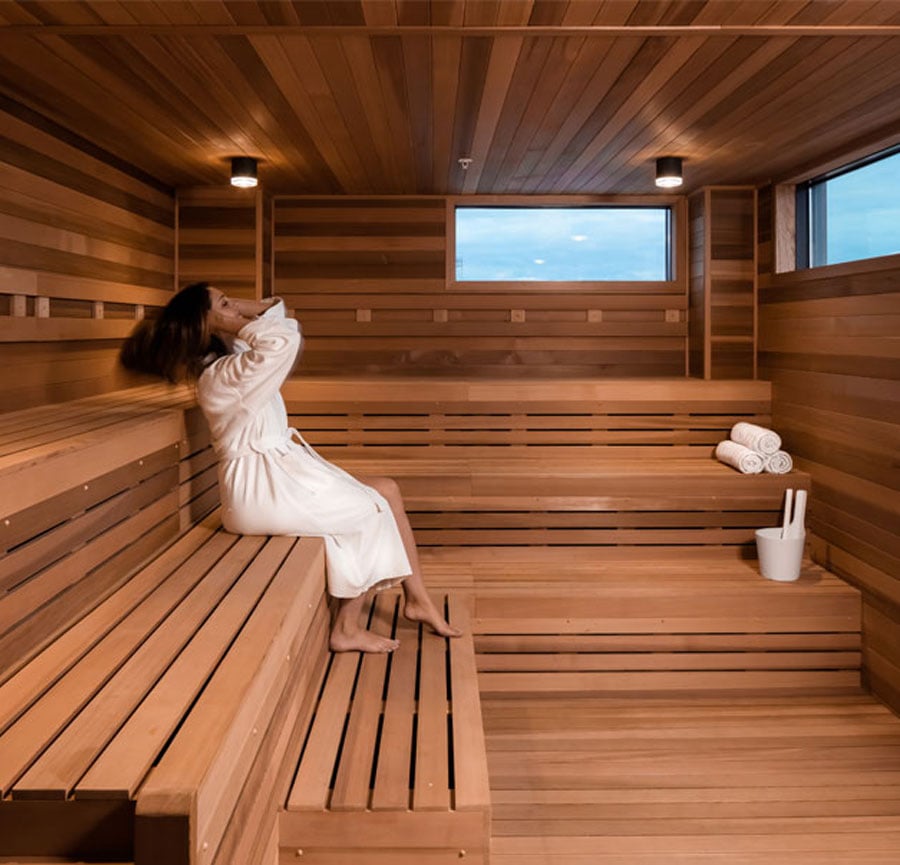The Best Guide To Traditional Sauna
The Best Guide To Traditional Sauna
Blog Article
Getting My Traditional Sauna To Work
Table of ContentsThe Single Strategy To Use For Traditional SaunaNot known Incorrect Statements About Traditional Sauna The Main Principles Of Traditional Sauna Traditional Sauna - An OverviewHow Traditional Sauna can Save You Time, Stress, and Money.
A lot of the weight shed in a sauna is water loss and is re-gained upon rehydrating. However, undoubtedly sauna can be an integral part of a healthy fat burning program. To consider the distinctions in between conventional and IR saunas, I will divide these into proven, academic, and made distinctions.Hence, the best factor in the saunawhich is at the ceiling directly over the sauna heateris normally between 185 and 190 F. Claims that a standard sauna goes beyond 200 F is just not true and not suitable for electrical saunas offered in the US. The temperature level for a far-infrared sauna is normally established in between 120 and 140 F; nevertheless, unlike the standard sauna, the goal in and IR room is not to attain a high temperature.
As a result of this, the temperature distinction is practically irrelevant, considering that profuse sweating leads to both sauna kinds, but the approach of heating the body is various. In an IR sauna the bather will certainly feel warm and will sweat profusely, yet at much lower temperature levels (Traditional Sauna). Hence, if the objective is to spend longer periods of time in the sauna, the IR sauna is a great option
When a traditional sauna has been effectively warmed, the sauna wall surfaces are warm, the air temperature has achieved established temperature level and the rocks are very warmed. As an intriguing side note, the heated walls and the rocks are producing far-infrared heat, incorporated with the warmed air, to create an "enveloping warm".
The 4-Minute Rule for Traditional Sauna

When the high temperature is accomplished, the aspects cycle on and off to preserve the heat. The majority of typical sauna users appreciate pouring water over the rocks to develop steam to raise sauna moisture degrees. The benefits of putting water over the rocks include: making the space extra comfy, dampening the nasal passages, and allowing the use of aromatherapy by blending vital oils with the water.

When the power goes into the body, it causes the body temperature level to boost and inevitably causes sweating. In an infrared sauna it is necessary for the emitters/heaters to remain on almost frequently. Since there is no mass of rocks to maintain heat, the sauna will certainly cool down if the emitters shut down.
As stated above, the sauna bather in an infrared space intends to position himself in front of operating emitters to Related Site obtain optimal take advantage of the warm. The heating time for the two rooms can be very various, relying on exactly how the spaces are made use of. For a typical sauna, a bather must enable 30-40 mins for the space to attain a preferred temperature level and to correctly pre-heat the rocks.
The Ultimate Guide To Traditional Sauna
A well built sauna will usually attain a temperature level of 150-160 F in concerning 30-40 minutes. For hotter temperature levels, the room may need to heat for a longer period.

Conventional saunas tend hop over to these guys to be bigger (therefore utilize more electrical energy) than infrared saunas, although conventional saunas are absolutely readily available in one and 2 individual dimensions. For a two-person standard sauna, 5x6 or 5x7 dimension is most prominent. The top bench can conveniently seat 2 or three people and is also enough time to relax throughout the sauna session.
More About Traditional Sauna
The typical price per kWH of electrical energy in the united state is approximately $0.11, so a 4.5 kW heater will cost about $.50 to compete one hour, if the heating system runs constantly for one hour. Usually a sauna heating unit will certainly run for 75% of the first hour and 50% of subsequent hours on since the aspects cycle once the established temperature level is attained.

There is a hardly ever reviewed difference in the social experience between the 2 spaces. While our culture has lost several of the social benefit of the traditional sauna experience, it can be really socially satisfying (Traditional Sauna). From family time in the sauna, to heart-felt conversations with significant others, to sauna partiesthe typical sauna experience can bring about intimate mingling
Fascination About Traditional Sauna
Most higher end infrared spaces consist of tinted light treatment, audio systems and full-glass fronts.
Report this page